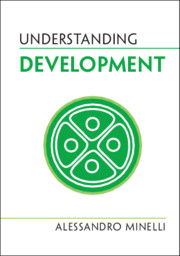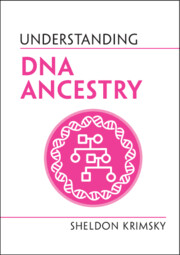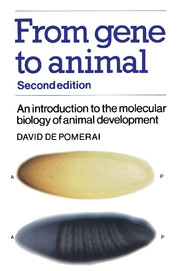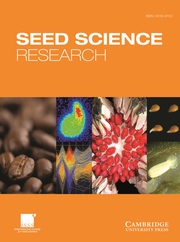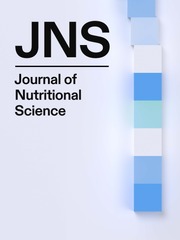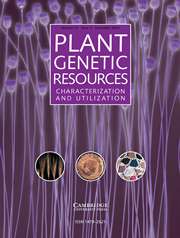Understanding Metaphors in the Life Sciences
Part of Understanding Life
- Author: Andrew S. Reynolds, Cape Breton University
- Date Published: April 2022
- availability: In stock
- format: Hardback
- isbn: 9781108837286
Hardback
Other available formats:
Paperback
Looking for an inspection copy?
Please email [email protected] to enquire about an inspection copy of this book
-
Covering a range of metaphors from a diverse field of sciences, from cell and molecular biology to evolution, ecology, and biomedicine, Understanding Metaphors in the Life Sciences explores the positive and negative implications of the widespread use of metaphors in the biological and life sciences. From genetic codes, programs, and blueprints, to cell factories, survival of the fittest, the tree of life, selfish genes, and ecological niches, to genome editing with CRISPR's molecular scissors, metaphors are ubiquitous and vital components of the modern life sciences. But how exactly do metaphors help scientists to understand the objects they study? How can they mislead both scientists and laypeople alike? And what should we all understand about the implications of science's reliance on metaphorical speech and thought for objective knowledge and adequate public policy informed by science? This book will literally help you to better understand the metaphorical dimensions of science.
Read more- Provides an accessible, interdisciplinary introduction to the diverse roles metaphors play in the life sciences
- Highlights the significance of metaphors for scientific theory construction, explanation, science communication, and education
- Addresses misinterpretations of common scientific metaphors
Reviews & endorsements
'What a timely book this is! It is precisely because biology has made such striking advances in recent years that its stock of metaphors is due for a clinical check-up. Reynolds offers a reliable and perceptive diagnosis of the framing narratives of the life sciences, sympathetically examining their strengths and weaknesses. This book should be an essential accompaniment to any study course in the biological sciences.' Philip Ball, science writer and author of How to Grow a Human
See more reviews'In this beautifully written, highly accessible, and captivating work, Reynolds reveals the incredible extent to which scientific methods and descriptions in biology, the life sciences, and medicine are infused with metaphors. Interweaving the rich history and philosophy of the uses of these metaphors over time, their many implications for scientific reasoning, understanding, and the ethical and political dimensions of science itself are perceptively explored, with wonderful clarity and across an encyclopedic range of examples. Metaphors afford telling insight, opening doors to further inquiry and closing others. Is your genome software? Are enzymes molecular machines? Does nature select some traits over others, thereby constructing the tree of life? The fascinating world of metaphors in science comes to life on every page.' Anjan Chakravartty, University of Miami, USA
'I read Lakoff and Johnson's book Metaphors We Live By in the 1980s, and it was eye opening. Andrew Reynolds' book, which should be called Metaphors Science Lives By, is equally eye opening. Metaphors shape the way we live in the world. In science, they shape the way we understand the world. This can have huge implications for our lives, for better or for worse. How does this process of understanding work, especially in the life sciences? This book deals with the essential role of metaphors in this process. Written in an admirably clear style, Reynolds makes us aware of the power of metaphor, but also its dangers and pitfalls. It is an essential read for everybody interested in understanding how science and science communication work with and through metaphors. Importantly, it also dispels some common misunderstandings about the role of metaphors in science.' Brigitte Nerlich, University of Nottingham, UK
'Understanding Metaphors in the Life Sciences takes us from genes to cells, and up to the vast evolutionary tree of life, showing how science depends overwhelmingly on metaphor for understanding, for advance, for communication. A very important book.' Michael Ruse, Florida State University, USA
'Philosophically illuminating and richly informative on genetics, evolution and ecology, it should be obligatory reading for students in both the humanities and the sciences.' Jane O'Grady, Literary Review
'Clear and concise, the book has an immense didactic value and will serve as a precious teaching aid in history and philosophy classes. However, despite being intended as an entry-level text, the book is more than a synthetic introduction to the subject. Beyond the analysis and evaluation of some of the most iconic metaphors in the life sciences, Reynolds provides a unique perspective on their function and use.' Bartlomiej Swiatczak, Metascience
'Philosophically illuminating and richly informative on genetics, evolution and ecology, it should be obligatory reading for students in both the humanities and the sciences.' Jane O'Grady, Literary Review
'… Metaphors are ubiquitous in science, but especially so in biology, and the aim of the volume is to help us make sense of that … it offers a concise but comprehensive survey of the issue at hand. …The volume concludes with a nice succinct summary of common misunderstandings of the role of metaphors. To bring order to a rather sprawling literature, Reynolds introduces several helpful distinctions … Reynolds's treatment of the topic offers fine help to stay alert.' J. Arvid Ågren, The Quarterly Review of Biology
'Reynolds … achieves the unique feat of writing a book for the lay scientific-minded reader as well as the seasoned scientist. One may gain insight into how the processes of scientific ideation may turn on a word; while the other is given a duty of care to tread carefully in the act of naming things that may go on to fulfil the word's inner semantic destiny(ies).' Sravya Darbhamulla, British Society for Literature and Science
Customer reviews
Not yet reviewed
Be the first to review
Review was not posted due to profanity
×Product details
- Date Published: April 2022
- format: Hardback
- isbn: 9781108837286
- length: 166 pages
- dimensions: 185 x 133 x 15 mm
- weight: 0.31kg
- contains: 15 b/w illus.
- availability: In stock
Table of Contents
1. Metaphors and science
2. Background metaphors: agents, machines, and information
3. Genes and genomes: agents, codes, programs, blueprints, and books
4. Proteins: machines, messengers, and team players
5. Cells: factories, computers, and social organisms
6. Evolution: natural selection, the tree of life, and selfish genes
7. Ecology: the balance of nature, niches, ecosystem health, and gaia
8. Biomedicine: genetic engineering, genome editing, and cell reprogramming.
Sorry, this resource is locked
Please register or sign in to request access. If you are having problems accessing these resources please email [email protected]
Register Sign in» Proceed
You are now leaving the Cambridge University Press website. Your eBook purchase and download will be completed by our partner www.ebooks.com. Please see the permission section of the www.ebooks.com catalogue page for details of the print & copy limits on our eBooks.
Continue ×Are you sure you want to delete your account?
This cannot be undone.
Thank you for your feedback which will help us improve our service.
If you requested a response, we will make sure to get back to you shortly.
×


